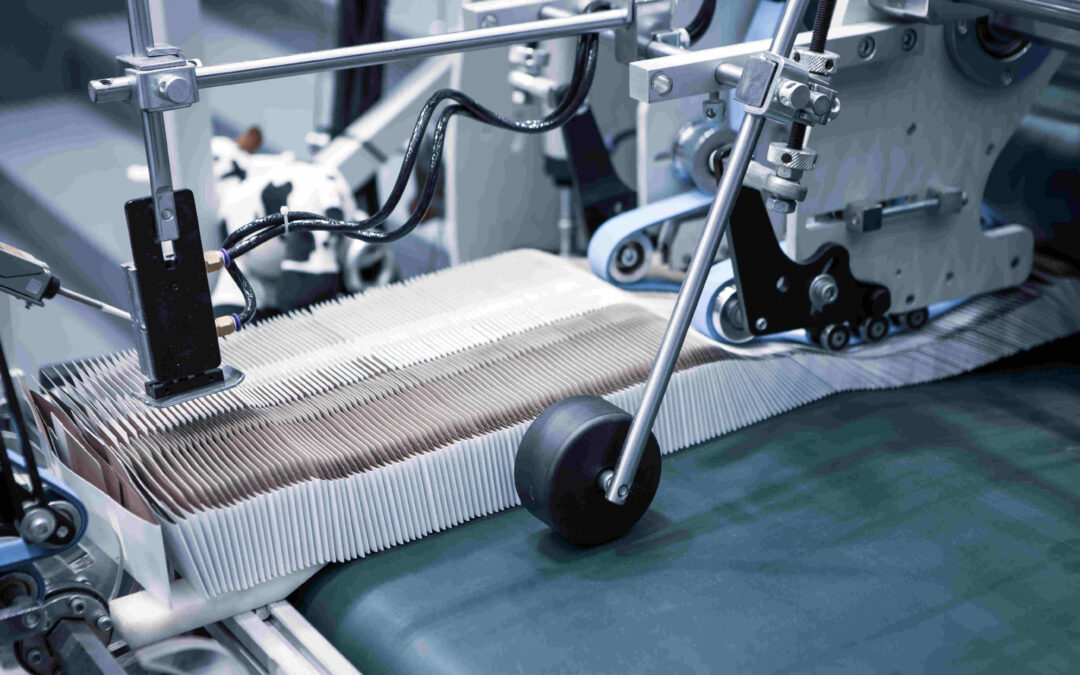Cartoners are highly versatile machines used in many different industries. They are used wherever a product needs to be packed in a collective or unit carton box, for example, in the pharmaceutical or food industries.
Table of contents:
What are cartoners used for?
Cartoners are specialised machines used in almost every industry where we need to pack products into cartons. What does a cartoner do? Its job is to take larger or smaller blanks of cardboard, form them into finished boxes and pack the products into cartons produced by the production line of which the cartoning machine is a part into these boxes.
Packing into cartons can be fully automatic, such as using a feeder or robot, or semi-automatic, where the operator places the products into the carton. Whether an automatic or semi-automatic cartoning machine is used depends on the specific characteristics of the product in question and the required performance of the particular production line. For more individual production, the semi-automatic machine is often a better and more economical solution.
Automatic packing into cartons does not end when the product is placed in the carton. Once this task has been completed, the next packaging stage is to seal the carton. Adhesives, foils or special snaps cut into the carton sheet are used.
What are the advantages of automatic packing into cartons? First and foremost, cartoner production allows for much higher performance than manual packaging of products. It is also a more economical solution for high-volume production, as the cost of purchasing the machine is quickly recouped compared to the cost of employing several operators to pack the finished products.
Packing in cartons – types of cartoners
There are many different types of cartoners. This is because the seemingly simple task of packing into cartons can be so diverse. It is due to the variety of packaging and products that go into it. For this reason, the market offers both compact machines that place one product into a carton at a time and complex packaging lines with extensive packing stations for single-unit and collective packing.
Based on their design, the basic division of cartoners is between vertical and horizontal machines. In the former, the product enters the carton in a vertical orientation. This is usually done from the top of the carton. Vertical cartoners are used to pack loose products fed into the carton by gravity. This could be rice or various types of granules.
In horizontal cartoners, the product enters the carton from the side, and the carton is then closed. They are commonly used in the food industry to pack biscuits and other types of food into cartons.
Cartoners are also divided according to the cycle in which they fill cartons. Production can be continuous or on a start-stop basis. As the name suggests, cartoners, working continuously, fill and close the cartons without stopping the packaging with the product. The performance of such machines ranges from 50 to 300 cartons per minute and depends largely on the type of product being packed.
The second type of machine, the start-stop cartoners, must stop the carton to fill and close it. They can be both horizontal and vertical. A characteristic feature of start-stop machines is the stroke movement of the carton inside the machine. This type of machine is characterised by a much lower performance than cartoners working continuously, usually not exceeding 60 cartons per minute.
Automatic packing into cartons – advantages
The main advantage of automated cartoners over the manual process of packing products is their speed. Folding cartons and placing products in them by operators is time-consuming and can be tiring and stressful. This has a negative impact on the mood and well-being of workers, which, in the long run, can reduce their productivity and make them less attentive and accurate in their work.
The automated packaging process is not only more efficient, but it is also much more accurate. Unfortunately, even the most conscientious worker will never be as accurate as a cartoner. As we all know, everyone makes mistakes and even machines make mistakes, but with an automated process, the number of mistakes is minimal. When they occur, they are most often caused by human error, such as an incorrect machine setup.
When listing the advantages of cartoners, it is impossible to ignore the economic benefits associated with purchasing such a machine. Although the initial investment cost of an automated machine may often seem high, it is an investment that will pay for itself very quickly as it replaces several or more operators.
Cartoners – summary
In summary, modern cartoners are machines that no modern production line where products are packed into cartons can do without. Cartoners can be either semi-automatic or automatic. In the latter case, the machine takes the cardboard sheets, assembles the boxes, and then places the products in them.
There are two basic classifications of cartoners. The first is based on construction and includes horizontal and vertical machines. The second is based on the cycle in which they operate. Cartoners can be divided into start-stop cartoners, which work in strokes and fill the packaging after stopping, and cartoners which work in a continuous cycle without stopping to fill the carton.
What are the advantages of automatic packing? First and foremost, it increases the efficiency of the entire operation, improves its accuracy and frees up human resources for other, more demanding tasks.
Are you looking for a machine manufacturer to help you automate your production process? We hope you will partner with Unilogo. Using the contact form on our website, you can quickly and easily get in touch with our team of experts, who will help you choose the best solution for your company.


